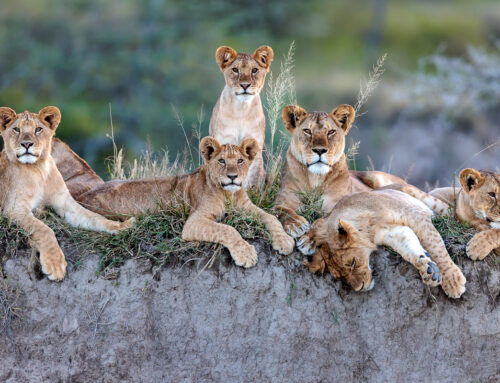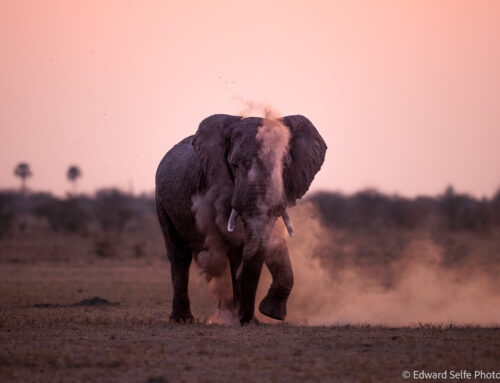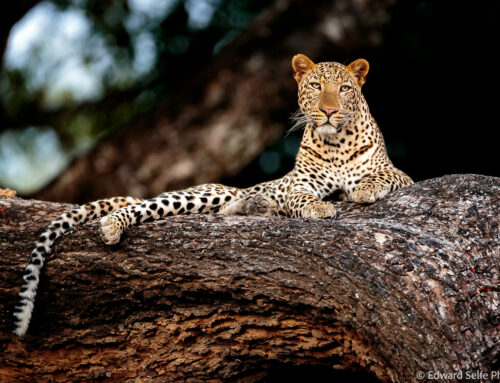On a safari to Mana Pools in September this year, my guests and I encountered a once-in-a-lifetime sighting of wild dogs surrounding and attacking an eland and her calf. It was a very distressing scene but Nature can be tough to watch sometime. We observed, from a distance, and tried to record and document the sighting as best we could.
At the time, one of my two cameras was being serviced so I was using an older camera in its place. One of the features that I missed in the replacement camera was a very high frame rate of 12 fps offered by my usual camera.
During the sighting, we took multiple bursts of shots, trying to capture the intense drama between the predators and the antelope. During one burst particularly, I remember thinking “there is going to be a great moment in that series!”.
Looking at the series when I got back to my computer many days later, I saw that the crucial moment — when the eland was charging the dogs, but her eye was still visible — was missing from the sequence.
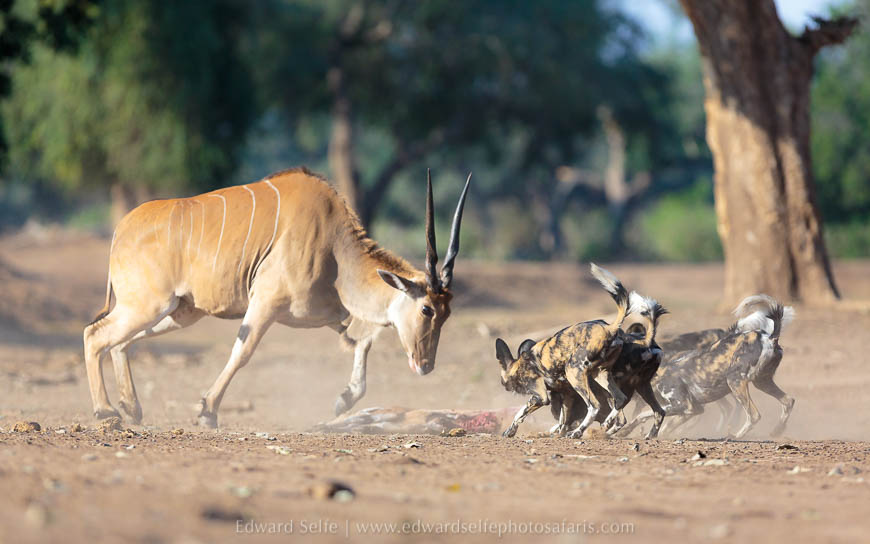
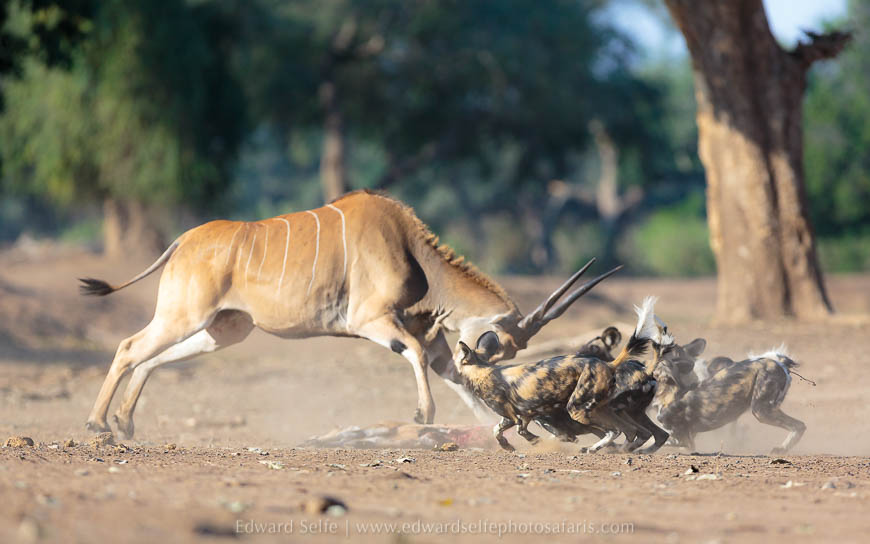
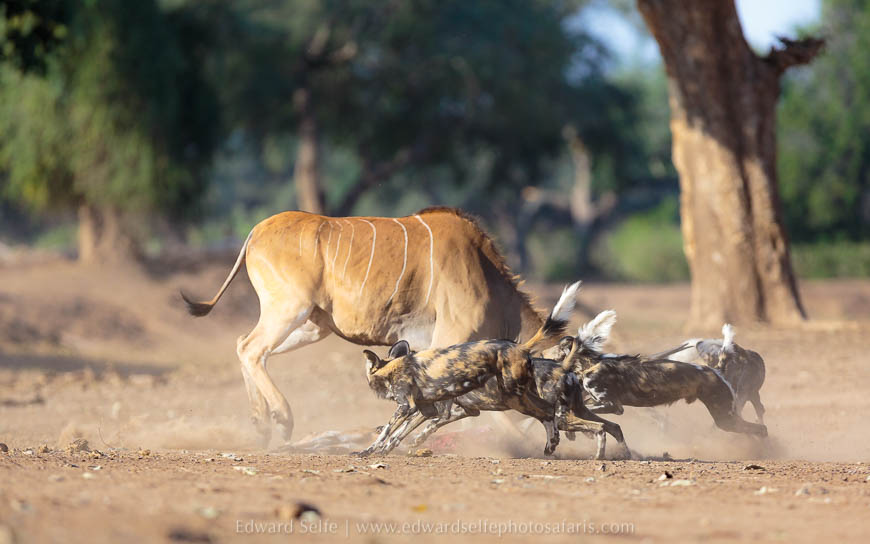
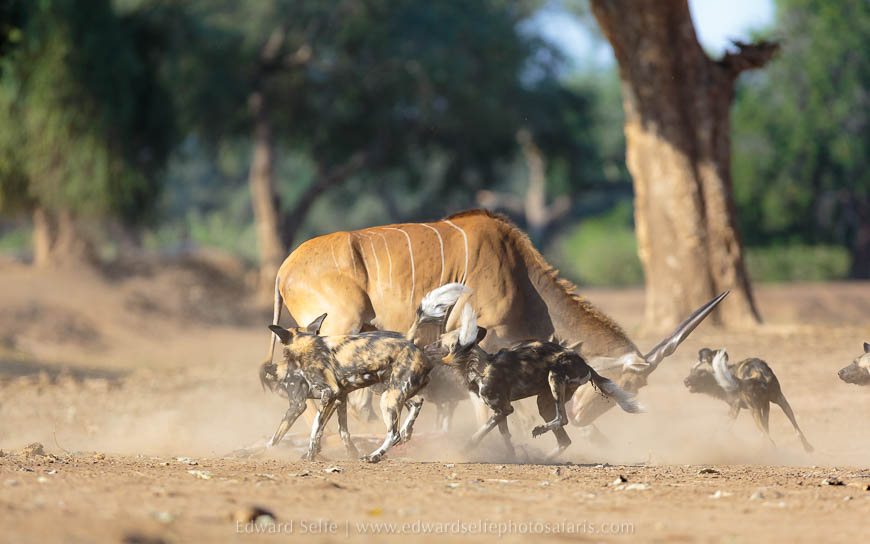
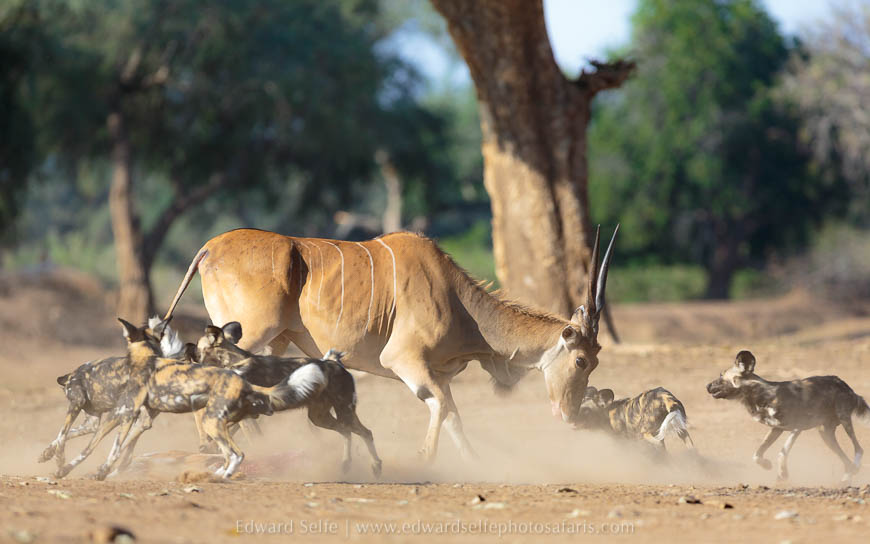
As you see above, I suggest that you use the highest frame rate your camera can achieve. If you shoot at 6fps rather than 12, you give yourself only half the chance of catching the precise moment you want. Using a very high frame rate does result in more images than you need sometimes. But you will find that you can train your finger to take just one or two shots in a burst, but you’ll be ready with the fastest possible frame rate for moments such as this.

